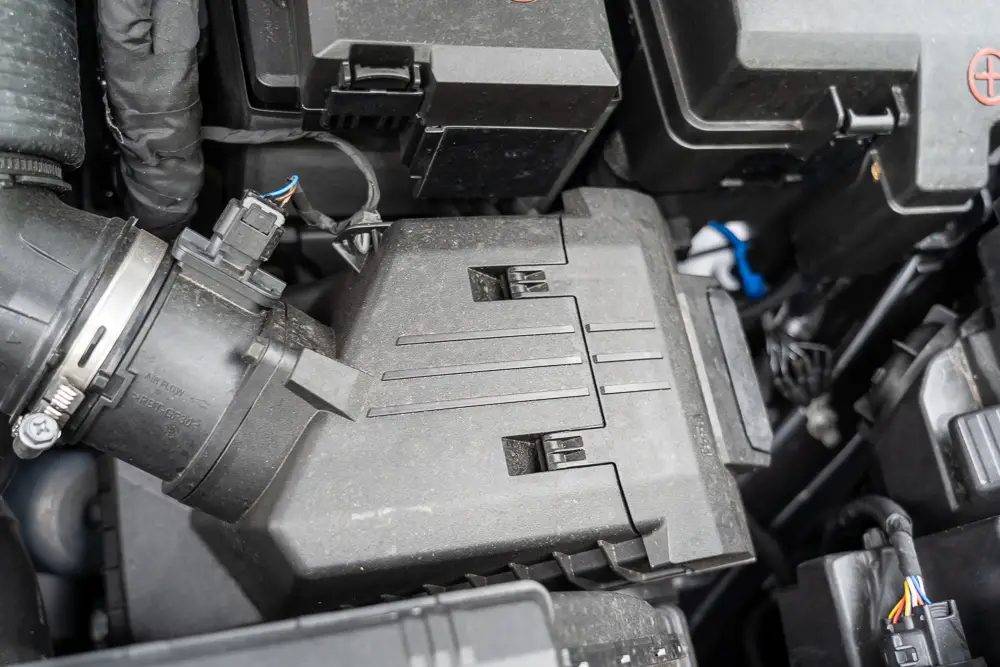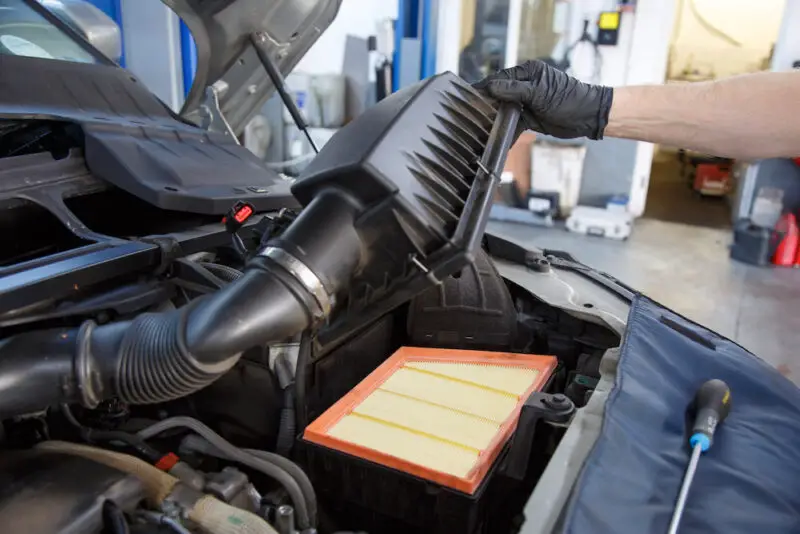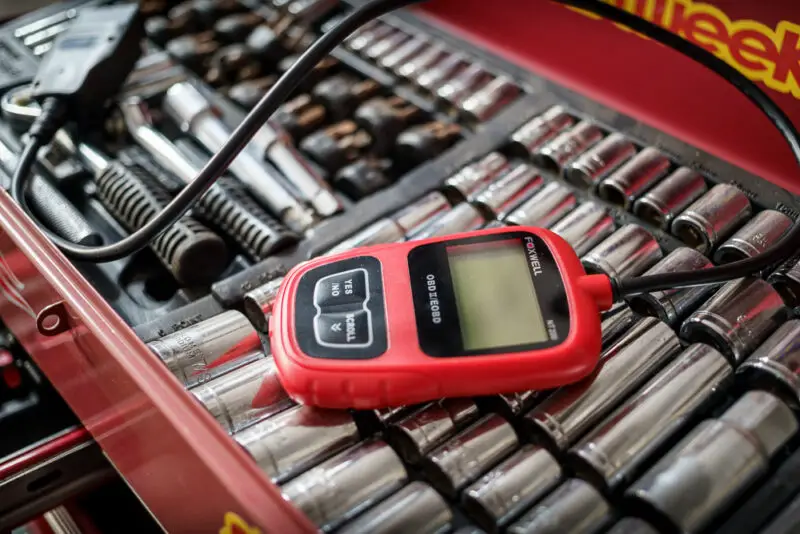Driving a vehicle might lead you to study a variety of codes, out of which the P0101 Nissan might be one. When a check engine light appears out of nowhere, many drivers are left perplexed and frustrated. It’s reasonable to believe that the pending issue code means expensive repairs and delays.
It, however, might not be the case all the time. The P0101 code is quite common but might not be recognized by all. When the PCM detects an out-of-limit specification, the car’s check engine light activates. The resulting caution light’s primary purpose is to raise awareness of the situation.
In many circumstances, resolving the source of such a check engine light is significantly less complicated than expected. The appearance of a P0101 Nissan issue code is no exemption to this rule. Why? Because such an error code often does not imply a significant or costly problem to fix.
The P0101 Nissan code might not be known by all, which is understandable. If you’re a beginner looking forward to getting all the details regarding this code, you’re in the right place. So, let’s learn more about what this P0101 Nissan code means…
What Does P0101 Nissan Mean
Now, the question arises- what exactly is a P0101 Nissan code? Well, it is when your MAF malfunctions. A mass airflow (MAF) circuit/performance failure is indicated by DTC P0101. This code means that an out-of-specification condition in the car’s mass airflow (MAF) circuit has just been identified.
In the basic sense, your car’s PCM has recognized an inaccurate or illogical input from the circuitry in question. It’s crucial to comprehend what a mass air flow sensor is and explain how it works.
This is to grasp the information better that code P0101 Nissan seeks to express. Or else, you’ll be stuck with over-the-top terms you can provide no connection to real-life about, which nobody wants.
At any one time, a vehicle’s mass airflow or MAF sensor can detect the volume of air being fed into the car’s intake tract. This information is sent to the vehicle’s PCM, which uses it to calculate the correct amount of fuel for complete combustion.
A vehicle’s PCM sets off a P0101 Nissan diagnostic code. This means the data produced by the car’s mass air flow sensor was outside of its usual operating band. So, there you have it; whenever it’s out of the typical operating range, that’s a problem.
- P0101 Nissan Altima Sedan
- P0101 Nissan Altima Coupe
- P0101 Nissan Sentra
- P0101 Nissan Maxima
- P0101 Nissan Cube
- P0101 Nissan Pathfinder
- P0101 Nissan Xterra
- P0101 Nissan Frontier
P0101 In Various Nissan Models
The MAF sensor is a term you shall be encountering quite often in this article. To fix the problems, replace the air filter and wash the Mass Air Flow sensor. You can clean it using low compressed air or Mass Air Flow Sensor cleaner before reinstalling it. Now, reset the code and go behind the wheel. If the error code reappears, you’ll need to repair the Mass Air Flow Sensor.
The possible cause of a P0101 in your Nissan vehicle could be a dry air filter you do not know. A dirty MAF sensor might also be the cause since P0101 is directly attached to the MAF sensor.
Intake air leakage is a common reason that might have also caused P0101 on your Nissan Altima. In addition, if the MAF harness is shorted or open, it further is a cause of the P0101 Nissan code. The circuit’s poor electrical connection is a standard P0101 Nissan code that people might not know.
The P0101 Nissan code might mean that the MAF sensor isn’t performing well or is damaged. Cleaning it should be your initial approach to fixing it. If you lift the hood on your Nissan Altima or Sentra, the sensor comes out of your air box. Pinch the plug that you see on the sensor and take it off.
Following that, you can see two screws and take them out. Once you’ve taken them out, pull out the whole module part. As you hold the MAF sensor in your hand, you can notice a few blank spots. It is the place you spray your cleanser.
Air dry the cleanser before you put the sensor back in. Line up the bolt holes while placing them back in so you can align them properly. Screw the bolts tight and put everything back in place. Check the specifications next, and see if it works now. If it does, congratulations. If it doesn’t, you should see for any other issues that you might have to fix.
MAF Sensor Symptoms
There might be a few ways to decipher that your vehicle has a code P0101 Nissan issue. But a few common symptoms alert you beforehand about the trouble that may be incoming.
1. Rough Idle
Rough idling is a common symptom of a P0101 code.
You’ll most likely notice if your car is idling poorly right away. A rough idle is commonly identified by the shaking and bouncing experience in the vehicle. Although, some examples are less extreme than others.
You have an idling problem if your car’s idle time falls below or exceeds this. Rough idling is a typical problem for which determining the specific cause can be challenging due to various circumstances. How your motor idles indicates its general health. So, treating the issue as soon as possible is critical, and ruling out any probable causes is vital.
2. Hard Starting
A hard start could be caused by various factors, including a dying battery or a broken starter. However, if your automobile has trouble starting after only a few hours of resting, it can add to the uncertainty.
Low fuel level is among the most typical reasons for this problem. Modern vehicles have a fuel injection system that heavily depends on high pressure. If it isn’t set up and regularly maintained in good condition, components shall not work correctly.
Facing difficulties in starting your vehicle is also a symptom of the P0101 code. The MAF sensor symptoms do not give away all the issues related to P0101. You need to watch out for the other components working fine.
3. Poor Fuel Economy
A poor fuel economy causes a drop in fuel efficiency and is a symptom of a P0101 code. It seems self-evident that it develops worse fuel economy as an automobile age.
In actual scenarios, it’s more realistic to argue that cars that aren’t well-maintained are more prone to losing fuel efficiency over time. Drivers following their maker’s maintenance plan are less to experience significant fuel economy drops during the life of their vehicle.
Keeping on top of regular maintenance is among the easiest ways to increase mileage. Even with many components to examine when your automobile approaches 100,000 or perhaps even 200,000 miles. So, keeping up with the regular fuel-saving service can be difficult. Especially if other factors such as warm temperatures play a role.
4. Stagnant Throttle Response
In simple words, throttle response is the time your vehicle takes to respond to acceleration. You can verify a P0101 code through a poor throttle response. For instance, you receive a P0101 Nissan Sentra code. So, your vehicle might have shown a sluggish throttle response in the past that you failed to notice.
Your car throttle response is the pace at which your car may raise its velocity after the accelerator is pressed. This can happen whether you’re stopped at a red light or are trying to pass a stream of vehicles.
Suppose you pump your foot down upon that gas pedal, and it takes an eternity for your automobile to accelerate. Hence, you have a poor throttle response. It could be the result of a variety of faults with your car.
The cost of resolving these issues varies depending on the problem’s seriousness and the price of the automotive shop. Consequently, finding an ethical, reliable automotive specialist is critical.
5. Exhaust Smoke In A Dark Color
Exhaust smoke is an inevitable byproduct of internal combustion engines. Also, it’s good if the smoke billowing from your exhaust pipe is the proper color and not too apparent. What happens, though, when unexpected colors of smoke emerge from your exhaust pipe?
If you notice thick gray, bluish, or black smoke emerging from the exhaust pipe, you’re pretty accurate to be concerned. You might also be having trouble with mass or volume air flow and circuit range performance.
The exhaust smoke in dark color is another symptom of the P0101 code, which you’d most like to pass off if it’s not known.
Causes Of P0101 Nissan
P0101 Nissan Causes #1: Poorly Maintained MAF sensor
The poorly maintained MAF sensor can make it faulty and not operate smoothly. It would cause a P0101 code on your Nissan. There are a few MAF sensor symptoms that show themselves. And that is when you can understand your vehicle’s soon-to-be display P0101. Not cleaned, dirty, and not regularly maintained MAF sensor shall induce P0101 in no time.
P0101 Nissan Causes #2: Broken Intake Boot
If you replace the mass air flow sensor and check the engine light is still on, it means the cause of the issue is not the MAF sensor. You can now verify the intake boot and check if it’s broken or not. A broken and damaged intake boot can also cause the P0101 code.
P0101 Nissan Causes #3: Leaks From Vacuum
Is your new mass air flow sensor not working? You might wish to check if there are any vacuum leaks in your vehicle. It’s placed right beside the MAF sensor itself and is often the cause of P0101 Nissan codes
P0101 Nissan Causes #4: Wiring Damage From MAF Sensor
Any wires being damaged or improperly placed can also induce a faulty MAF sensor; it might prevent the sensor from working functionally. Wire damages might be tiny, but they can cause the whole system to disrupt. As a result, the P0101 code is generated.
Is P0101 Nissan Dangerous
The code P0101 poses no risk to the driver and does not prohibit the vehicle from starting. However, this will raise fuel usage and make operating more difficult. Internal engine breakdown can occur after long periods of driving.
Although the P0101 code would not prevent the vehicle from driving, you must check it out as quickly as possible. In some cases, the MAF sensor malfunction might result in high fuel consumption, harsh operation, and difficulties starting. Long periods of driving may cause internal engine difficulties.
How To Diagnose P0101 Nissan
Step 1: Are There Any Additional DTCs
With the help of an OBD2 code scanner, identify the presence of any extra DTCs before starting the testing process. If there are other codes, it is critical to analyze each one in the order of the manufacturer’s importance.
Step 2: Is There Anything Wrong With The MAF Sensor Wiring Plug Connector
You’ll start the diagnostic process by looking at the wires that connect to your car’s MAF sensor. Make sure that there are no scorched, frayed, or broken wires. Also, double-check that all wire endings are securely fastened to their appropriate connections.
Step 3: Are There Any Intake Tract Leaks
Examine the condition of the air intake tract piping in your car, which runs from the air intake to the car’s throttle body. There should be no fractures, splits, or punctures in this tube.
Step 4: Is The MAF Sensor Okay
Remove any required intake ducting to allow entry to the MAF sensor directly if no cause for your car’s P0101 code has indeed been found to this point. Look for evident signs of problems or particle fouling on this sensor.
Step 5: Are There Any Vacuum Leaks
Without a definitive diagnosis, it will be essential to look for vacuum leaks. It can be done using a smoke machine or even a handheld propane flame at idle. It depends on whether the car is running.
To fog, the intake-related parts or connections with propane, utilize an unattended torch. The position of a leak will be associated with a change in engine idling.
How To Fix P0101 Nissan
To fix the P0101 code, refer to the causes first and then conduct the following steps.
- It is repairing any wiring damages that might have taken place.
- Replace a broken intake ducting, if there’s any.
- Clean the MAF sensor is essential.
- Repair all vacuum leaks and examine thoroughly.
- Replace the MAF sensor if required.
Conclusion
If you’re still having issues fixing the P0101 Nissan code, you might need to consider the professional handling of your vehicle. Often, people overlook the most common symptoms and confuse them with other codes since there are so many. So, hopefully, our guides here have been of help to resolve your P0101 Nissan issue.
FAQs
How To Fix Code P0101 On Nissan Altima
Generally, fixing a P0101 Nissan code would require you to diagnose the issue first. After that, you can begin the steps of trying to fix the code. Similarly, on a Nissan Altima, you must first identify the problems.
1. Clean The Air Filter
A dirty air filter is one of the common causes of a P0101 Nissan. To fix it, you need to clean the air filter first. Right after opening the hood of your Nissan Altima, you shall be able to spot the air filter beside the MAF Sensor.
Take it out and clean it thoroughly before putting it back in once it has dried. It shall make your air filter function like before. If you’re still getting a P0101, you have other problems to fix in the vehicle in that case. So, be ready for them!
2. Clean The MAF Sensor
Next up, you must cleanse the mass air flow sensor if it is dirty instead of the air filter. The steps and cautionary practices you must follow are listed in the article, which you can refer to before you begin the cleansing.
Cleaning the MAF sensor will most likely solve your issues if they’re less in volume. However, you might need to replace the MAF sensor fully if it’s dysfunctional or damaged.
No amount of cleaning would suffice in that case. Therefore, clean the sensor, put it back in, and see if your vehicle works. You need to replace the sensor if the P0101 Nissan isn’t fixed. So, be ready to pull out a few bucks!
3. Repair The Vacuum Leaks
Vacuum leakage is another common issue that causes a P0101 Nissan code in your Nissan Altima. In this scenario, you must ensure proper repair of the damaged air intake system to prevent any vacuum leaks.
After fixing the MAF sensor and the air filter, inspect the engine check light. If the engine check light is still on due to P0101- you have a vacuum leakage you need to check.
4. Replace Or Repair The Exhaust
If you fail to find vacuum leaks, considering the air system is working fine, the trouble is likely the exhaust. A clogged catalytic converter causes restrictions like these in your exhaust.
In contrast, physical damage to the exhaust itself makes it go dysfunctional. This results in the exhaust being faulty and the gasses not going out of the vehicle’s engine smoothly. Therefore, fix the damaged exhaust to get rid of the P0101 code.
What Does DTC Mean On A Code Reader
When a car’s internal diagnostics system discovers a problem. So, it creates a diagnostic trouble code and typically notifies the operator via a flashing light on the instrument panel.
DTC codes are the abbreviation for diagnostic problem codes. DTC codes, meaning Diagnostic Trouble Codes, let you figure out what needs to be addressed. So, you can leave your car running and secure.
When the car’s OBD system identifies a problem, it produces a DTC code and sends an alert to the center console. A telematics system can send the alarm immediately to the automobile workforce. This system can be configured to send the warning to the maintenance team directly.
What Does MAF Mean
MAF means Mass Air Flow in terms of the DTC codes. A mass airflow (MAF) sensor determines how much air is pumped into the engine. The P0101 Nissan is a check engine light code.
This indicates the mass air flow sensor’s assessment of incoming air. So, the engine is beyond the operator’s defined range. The MAF is located amidst the filter and the engine’s air handling unit.
How Do I Fix Code P0101 Nissan
First, inspect the mass air flow sensor to verify if it only requires a fast cleaning. The issue code is triggered when a foreign object, such as a leaf interferes with the measurement element (hot wires).
After that, examine the air filter and see if it has been replaced recently. Suppose the trouble started at about a similar time as just an air filter replacement. Thus, you should examine the air filter for professional installation and the MAF for blockage.
In some cars, a tiny metal mesh is fitted across the air filter intake. This is to help prevent debris from clogging the air filter and MAF. If your vehicle has this filter mesh, you’ll also need to inspect and clean it.
After checking the air filter, look over the intake boot for any physical harm (cracks, torn parts, etc.). Several luxury automobiles, such as BMW and Volvo, have vacuum leaks and corrosion in the intake box.
After inspecting the boot, you will be required to check whether any additional vacuum airflow sealing is faulty. Finally, you’ll need to use the MAF scan tool’s real-time feature. You can engage a professional to take measurements from the airflow sensor at various RPMs (e.g., 1000, 2000, 3000).
Then you can correlate them to known MAF values from a properly functioning MAF sensor, or you can do it yourself. Defective airflow sensors are widespread in many autos, and the P0101 code is frequently corrected with a relatively easy fix.





